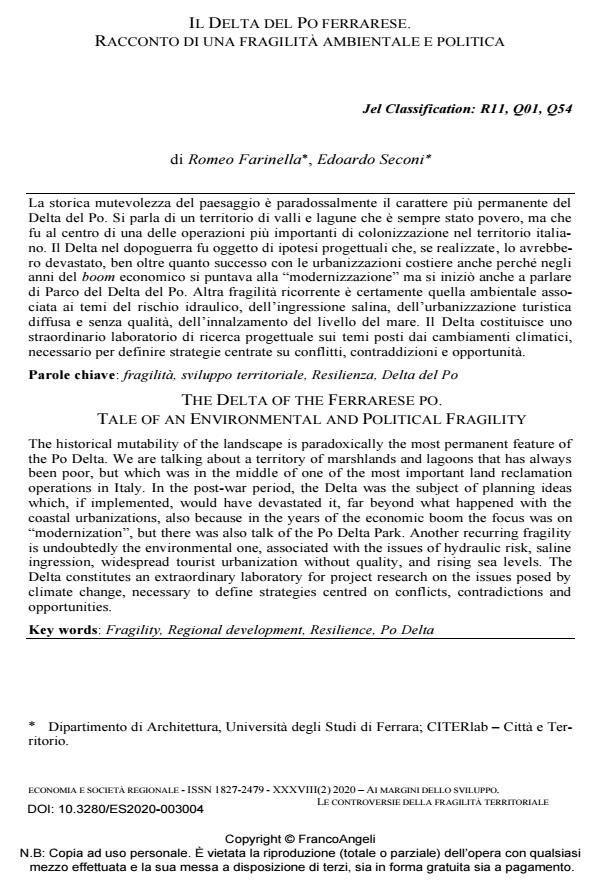The delta of the ferrarese po. Tale of an environmental and political fragility
Journal title ECONOMIA E SOCIETÀ REGIONALE
Author/s Romeo Farinella, Edoardo Seconi
Publishing Year 2021 Issue 2020/3
Language Italian Pages 12 P. 51-62 File size 298 KB
DOI 10.3280/ES2020-003004
DOI is like a bar code for intellectual property: to have more infomation
click here
Below, you can see the article first page
If you want to buy this article in PDF format, you can do it, following the instructions to buy download credits

FrancoAngeli is member of Publishers International Linking Association, Inc (PILA), a not-for-profit association which run the CrossRef service enabling links to and from online scholarly content.
The historical mutability of the landscape is paradoxically the most permanent feature of the Po Delta. We are talking about a territory of marshlands and lagoons that has always been poor, but which was in the middle of one of the most important land reclamation operations in Italy. In the post-war period, the Delta was the subject of planning ideas which, if implement-ed, would have devastated it, far beyond what happened with the coastal urbanizations, also because in the years of the economic boom the focus was on "modernization", but there was also talk of the Po Delta Park. Another recurring fragility is undoubtedly the environmental one, associated with the issues of hydraulic risk, saline ingression, widespread tourist urbani-zation without quality, and rising sea levels. The Delta constitutes an extraordinary laboratory for project research on the issues posed by climate change, necessary to define strategies centred on conflicts, contradictions and opportunities.
Keywords: Fragility, Regional development, Resilience, Po Delta
Jel codes: R11, Q01, Q54
Romeo Farinella, Edoardo Seconi, Il delta del Po ferrarese. Racconto di una fragilità ambientale e politica in "ECONOMIA E SOCIETÀ REGIONALE " 3/2020, pp 51-62, DOI: 10.3280/ES2020-003004